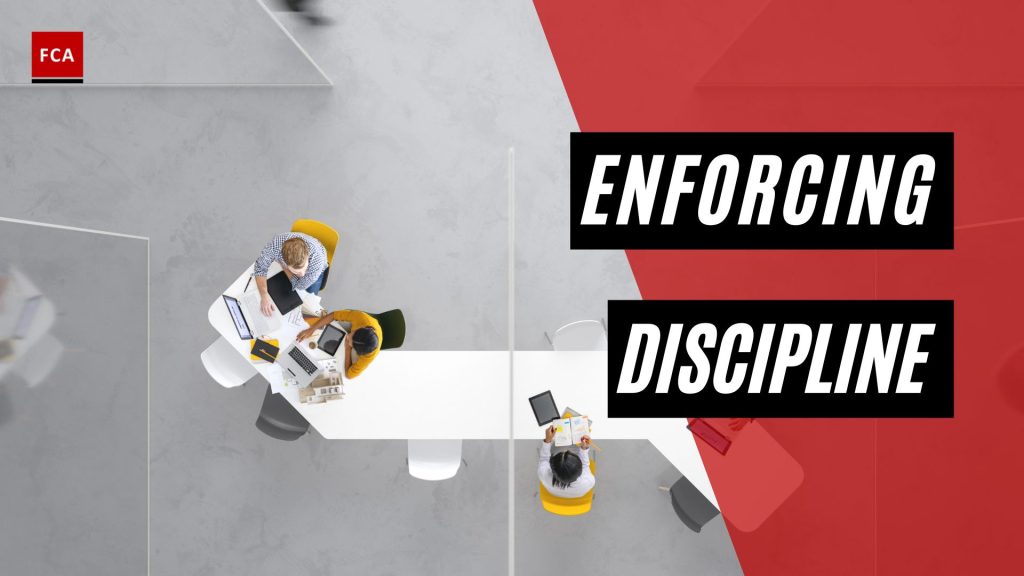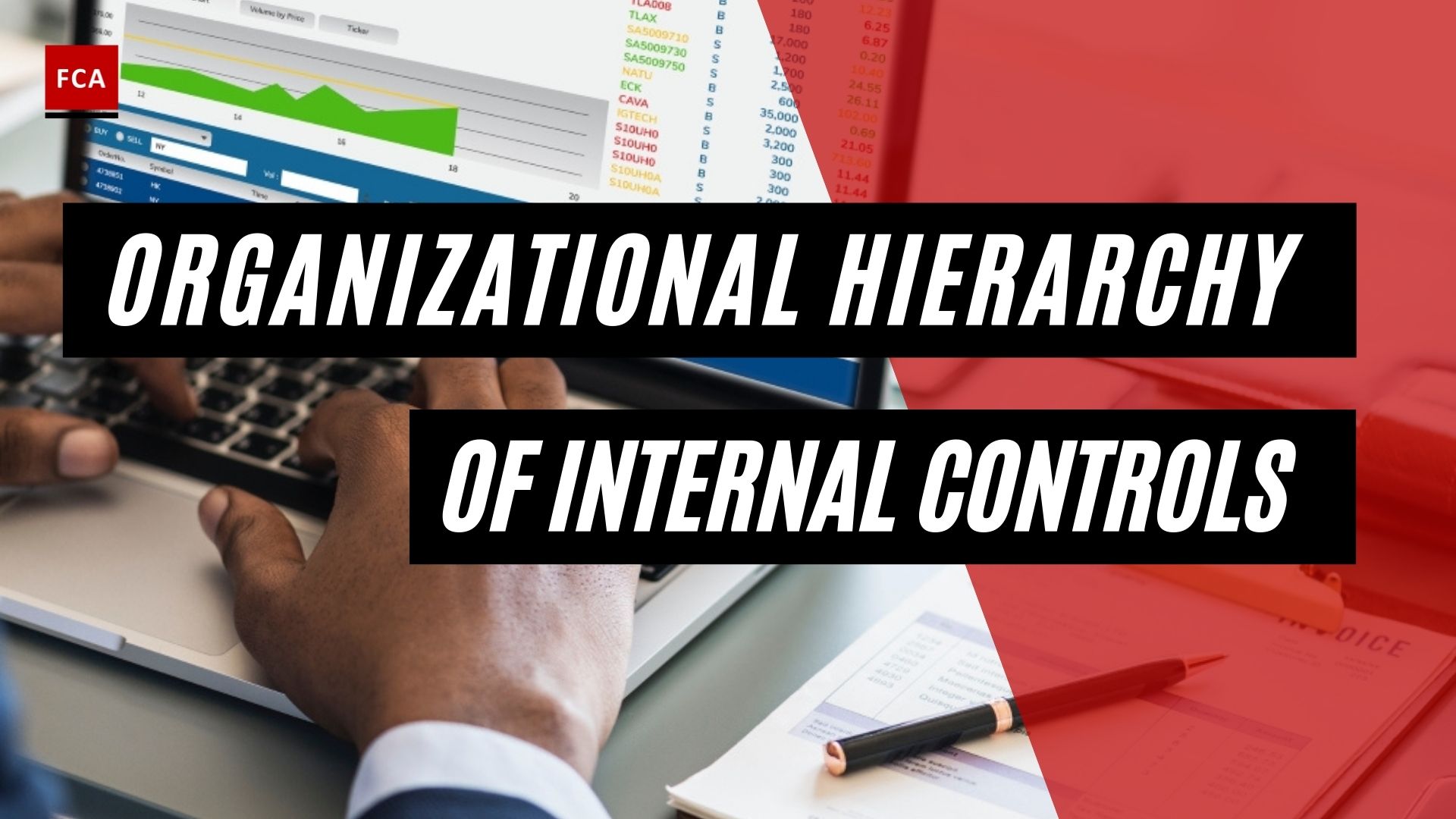Enforcing discipline is a commitment to strict compliance with the applicable laws and a corporate culture that promotes honesty and integrity amongst employees. Enforcing discipline requires customer service, transparent operations, and true and fair financial reporting following internal policies, procedures, regulations, and standards.
Enforcing discipline prevents fraud, waste of resources, abuse, data loss, misreporting, insider trading, and other non-compliant practices. Compliance actions are focused on enabling the employees toward corporate compliance, including but not limited to implementing strong internal controls and regular compliance monitoring.

Maintaining and Enforcing Discipline
The first step in maintaining discipline in the workplace is to define what you mean by it. Talk to other managers and supervisors and ask them what employee discipline problems they’ve experienced in the past or continue to experience and how they handle them.
It requires all employees, vendors, contractors, and other stakeholders to share the responsibility of preventing, detecting and reporting suspected fraud, waste, abuse, and acts of misconduct. All employees must report suspected compliance issues or violations to the line manager and the compliance team.
Reporting any misconduct or activity that a reasonable person might suspect violates the code of conduct and the organization’s compliance program, which encourages employees, board members, and others to be diligent in their work to ensure compliance.
Enforcement of compliance requirements
Enforcement of compliance requirements prevents non-compliant behavior and such behavior that may result in disciplinary action up to and including fines. Failure to report, disclose or assist in a compliance review breaches the employee’s obligation. Individuals who should have known but failed to detect such misconduct will also be subject to disciplinary action, including termination.
The purpose of the regulatory enforcement activities is to ensure that those charged with governance are made aware of the organization’s compliance status and risk profile so that they may take or suggest corrective actions to be taken by management. It is the responsibility of the management to present the true and meaningful information in Infront of the Board members and the compliance committee.
To enforce discipline, the human resource function in the organization plays a significant role in implementing the code of conduct and ethics. All employees are made aware of their ethical compliance duties and obligations and are communicated with a written code of conduct for their acceptance and compliance. Disciplinary actions are communicated to the employees to make them aware of the possible consequences due to misconduct.

Appropriate investigation procedures are developed and documented by the management, including disciplinary actions to be taken in case of non-compliance. Disciplinary actions are known to the employees, making them uncomfortable with the misconduct or regulatory non-compliance. The Board may decide on the disciplinary action related to the misuse of confidential data, which may include the termination from the job. This possible disciplinary action shall prevent the employees from misusing the organization’s confidential information.
Similarly, the regulator prescribes disciplinary actions for regulatory noncompliances, which result in organizations developing appropriate measures and controls to comply with applicable regulatory requirements.
The organization’s compliance function works as a bridge between the regulator and the management; therefore, it is the duty of the compliance team to identify the possible disciplinary actions the regulators may take in cases of breach of regulatory requirements. The compliance officer consults with the human resource department to ensure that possible consequences of non-compliance with corporate regulatory requirements are laid down in the code of conduct and other relevant policies.
Final Thoughts
Disciplining employees can be a difficult process if your disciplinary system is not centered on the employee. It can be overly focused on punishment at times, resulting in short-term gains but long-term losses in morale and organizational culture. A lenient approach, on the other hand, may not have a strong enough impact to deter unacceptable behavior or gross misconduct in the workplace.
That is why, when developing a process for your company, it is critical to use a combination of various disciplinary measures. You’ll be able to create procedures that help employees easily recognize their flaws and take the necessary steps to grow once you’ve found the right balance.








